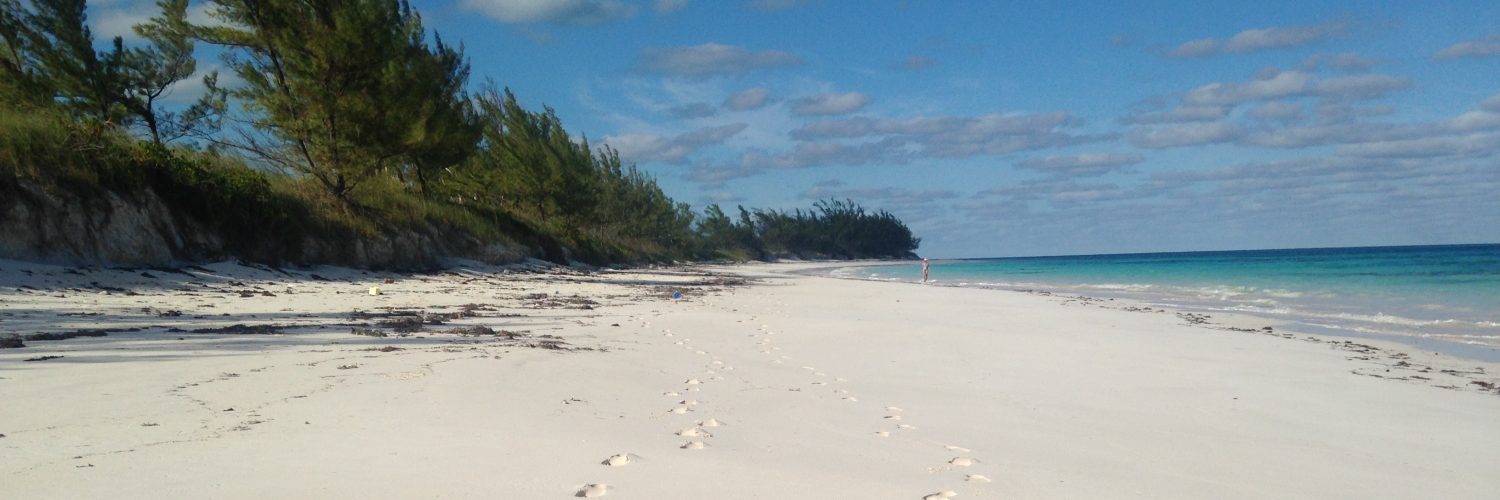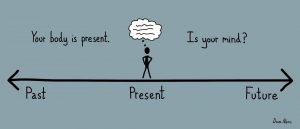The Christmas period is often a time of increased tension, stress or anxiety for many and can result in unpleasant experiences for individuals or families. Spending an extended period of time with friends and family doesn’t happen very often, so it would be beneficial for all if we were able to approach the festive season with a peaceful mind.
What causes stress at Christmas?
Mindfulness shows us that the struggles we go through in life often aren’t external to us (as we believe them to be) but are instead based in our perception and thoughts/beliefs about a situation. Most of us feel the pressure to get the right gifts for the right people, spend enough money but not too much money, make sure everyone has enough food and drink, wear the right outfit, attend the right events or parties, not drink too much,…and inevitably find time to demonstrate the right amount of merriment on social media…
A lot of the pressure we experience during the festive season can be found in our thought patterns or learned responses. Thoughts of how things should be and comparison to ideals or others can be harmful. If we tune into the present moment (no pun intended) and observe our true experience in the moment, we may find that we are able to enjoy the season more than previously. If something does go wrong – the turkey is dry, you couldn’t get that last minute gift because it had sold out – you can use mindfulness techniques to bring yourself back to the moment instead of getting caught in unhelpful negative thought patterns.

Tips to move mindfully through the festive season
A mindful queueing experience: You can’t avoid them, there are queues in shops, in supermarkets and on the roads this time of year. Every year we know it will happen the closer we get the Christmas, but every year we find ourselves frustrated, tense, irritated and sometimes infuriated with the constant waiting. Battling against the flow of life is a great source of stress for us. If we catch ourselves as frustration arises and instead of letting it take hold, we bring ourselves to our immediate experience of the moment. No judgment, no likes or dislikes, just observation. What does impatience feel like? Where is it held in the body? Try to feel it rather than think about it with the usual ‘why is this taking so long?’ ‘I should have joined the other queue’. You will notice almost straight away that tension eases out of your body and impatience gives way to patience naturally.
3 minute breathing space: When things get really testing (either during the build-up to Christmas day or during a family gathering for example) we often say things we regret or experience anger with ourselves or others. When we feel that a situation is getting too difficult, we can take 3 very effective steps to transform the moment mindfully.
- If you feel anger, impatience or frustration arising, catch it as soon as you are able and stop yourself from speaking or acting negatively. If you need to remove yourself from a situation, you can do so.
- Ground yourself in the moment by tuning into your breath. If you are agitated, try taking long slow breaths for a few minutes to give yourself space.
- Pay attention to what you are experiencing. Try to feel it in the body instead of listening to your thoughts about a situation or person. Bring your awareness back to the moment and your direct experience of it. Try to bring awareness to how a situation affects everybody, rather than just you.

Reclaim time: We always run out of time at Christmas. Not enough time to finish the shopping, wrap the gifts, visit friends and family, finish things off at work before the break. The constant rushing and pressure to ‘people please’ often leaves us more tired after the Christmas holiday than before it. This year, make a little time for yourself. The pressure we feel is often self-applied, so take a load off. It doesn’t have to be extravagant, but a little mindful self-care can go a long way. Take a walk outside and take in all that nature has to offer this season. Take a long bath with some essential oils. Read a new book. Find opportunities to bring yourself and your experience back into the present moment as often as possible instead of living in an imagined future or re-living a past event.
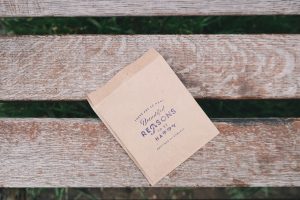
Christmas is the perfect time to practice gratitude; not just for the gifts given and received, but for all the fortunate things we experience in life that often get swamped by thoughts of how life should be or what we should have achieved ‘by now’. Take a few moments each day to list the things you are grateful for…I bet that list is much longer than your Christmas wish list.
Letting go of the past
Letting go of the past will be an issue for most people at some point in their lives. We can all remember hurtful things that were said to us decades ago, or bad experiences that we (knowingly or unconsciously) allow to affect our future experiences. I think we would all agree that being able to let go of the past would provide us with more space in our minds and more peace in our lives.
So how do we do it? It comes back to basic mindfulness principles of being in the present moment, using an anchor to keep us there and staying intentionally and without judgment.
Something that should help us gain some perspective on letting go is that the past has already been and gone; it has been let go of already. What our mind is holding onto is attachment to an event, thought, experience or occurrence from the past. It’s that attachment that stays with us and effects our mind over and over again. When we go into the ruminative state, we run the past (or an imagined future) over and over in our minds. Neither the past nor the future exist; it’s just our thoughts that disturb the mind.
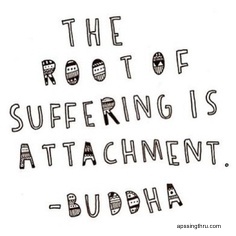
If we repeatedly bring ourselves back to the present moment, our mind will start to learn not to dwell in the past and slowly we will let go of attachment or harmful/negative thought patterns that seem to have power over us. One of the best anchors that we can use in our practice of letting go is the breath. It’s always with us and accessible at any time. Bringing awareness to the breath frees the mind from the past and brings it immediately into the present moment. A simple breathing meditation can be used any time, any place and can provide immediate relief from unhelpful thoughts based on the past. By being in the present moment, we are forced to let go immediately of our attachment to the past. The process won’t be easy and it will take time to be free from attachment to the past for longer than a few moments, but practising bringing ourselves back to the present moment will train the mind to let go.
If the breath doesn’t work for you, or your thoughts prove a stronger anchor than observing the breath, you can try a sense based mindfulness practice; using what you hear, see, smell, feel etc in the environment at that moment to keep you in the present.
Using mindfulness to break down attachment stems from Buddhist teachings and practices that have worked for providing mental calm and clarity for many hundreds of years. The Buddhist tradition that I follow very much focuses on making Buddhist teachings practical and accessible for the modern world. Applying traditional mindfulness techniques in practical ways means the application of this ancient knowledge is relevant to helping us solve our modern problems.
Try something old; to find something new.
Winning Ways to Wellbeing
I visited a primary school in Warwickshire recently and was pleased to see a display promoting wellbeing through 5 practical steps that are now promoted as basic steps to wellbeing all over the world. The ‘5 ways to wellbeing’ outline simple steps that we can all take to improve our wellbeing and are now advocated by the NHS in order to help people actively take control of their wellbeing. Starting small and building to a holistic approach to wellbeing can help us lessen or avoid more long-term conditions such as depression or anxiety that can effect physical and mental health for many years.
But what is wellbeing exactly? What are we trying to improve? Undoubtedly our mental health and states of mind, but wellbeing is a whole of life experience. An improvement in our overall quality of life and experience through practical, active steps to increase our levels of enjoyment, self-worth, physical and mental health and interactions with others.
This sounds like a big challenge, right? Definitely. But luckily the 5 ways to wellbeing really do work and are a great start to improving wellbeing.
The 5 Ways to Wellbeing
- Connect – There is strong evidence that being around others (friends, family, social groups) not only increases our all-round wellbeing, but also increases our longevity. Talking is the best therapy. You don’t have to share everything with others; start small. Make a meaningful connection instead of living in the digital world all the time. When you ask someone how they are, actually listen and pay attention to the answer. Speak to a stranger or make conversation while waiting in a queue. Try car sharing with a colleague; they might even become a friend.
- Be active – We have all read the decades of evidence that shows being physically active improves our mental health…so why do we still doubt it? Because it’s not easy to get active and stay active. But it’s not hard either. There are small changes we can make on the way to becoming more active and improving wellbeing. Take the stairs instead of the lift. Take a class after work with colleagues or organise a new sporting activity for all work colleagues to try. Go for a walk at lunchtime. Get off the bus a stop earlier and walk to your destination. If you feel like more of a challenge, take up a regular class that is proven to aid concentration, inner peace and help sleep…yoga is the obvious.
- Take notice – The basics of mindfulness; notice your surroundings. Be present in the moment and just ‘be’ instead of always ‘doing’. The only moment that exists is right now, so try to pay more attention to what is really going on instead of living in your head thinking about what has already happened or what might happen. Being mindful increases our awareness and knowledge of the self. If we know what we spend our time thinking about, we can start to change our thought patterns for the better. Living mindfully is a difficult task for the novice, but we can all try small steps. Choose a mindfulness cue; a sound or sight that whenever you hear/see it reminds you to take 60 seconds to be mindful and notice what’s going on in the environment.
- Keep learning – Not only is the mind kept active, but there is the chance for social interaction, being mindful and being active all rolled into one here. Continued learning can enhance self-esteem, motivation and can help you to prioritise goals and your own happiness. This doesn’t have to be a formal class to count as learning. You can try learning a new word each day, try reading the news in a foreign language, listen to classical music, join a book club.
- Give – By giving to others we develop our compassion which in turn increases our compassion for ourselves. Engaging in acts of kindness helps us to gain perspective on our own internal struggles and gain an understanding of the greater good. Giving your time, expertise or just random acts of kindness to others can greatly increase your wellbeing and decrease your attachment to seeking happiness through material gain.
A challenge…
I challenge you to try the 5 Winning Ways to Wellbeing for one week and track how you feel in body and mind. Leave a comment below about your experiences and check back to see my review of a week of Winning Ways to Wellbeing.
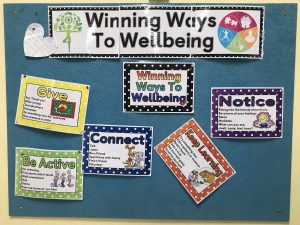
A Mindful Holiday
 We all love to ‘get away from it all’, ‘leave our troubles behind’ and enjoy a holiday (maybe several if we’re lucky) each year. We have a plan of where to go, what to see, what to do and even the places to eat, the number of hours we want to spend on a beach, the sights we want to tick off our ‘to do’ list. For how much of our holidays are we actually present? Really present…paying full attention to what we’re doing in the moment, not thinking about the next thing we’re going to do or how what we did this morning perhaps wasn’t as great as we thought it would be.
We all love to ‘get away from it all’, ‘leave our troubles behind’ and enjoy a holiday (maybe several if we’re lucky) each year. We have a plan of where to go, what to see, what to do and even the places to eat, the number of hours we want to spend on a beach, the sights we want to tick off our ‘to do’ list. For how much of our holidays are we actually present? Really present…paying full attention to what we’re doing in the moment, not thinking about the next thing we’re going to do or how what we did this morning perhaps wasn’t as great as we thought it would be.
We all hope that a trip away will be the ideal escape from work, from stress, from real life. As soon as we recognise that physically moving out of the sphere of our troubles or busyness doesn’t actually rid us of those things, then we can get the most out of our breaks and life generally.
Happiness and peace of mind can occur anywhere at any time, as long as we are in the present moment, paying attention, on purpose.
Paying attention
We can get the most out of our holidays by simply paying full attention to what we’re doing. I enjoy driving in continental Europe, and I think it’s because I pay so much more attention to the task of driving than I normally do. I’m constantly watching, listening, feeling the roads. My focus is fully on the task…and it becomes enjoyable. My mind is not on the destination and what I’m going to do when I get there…it’s just on the very moment of driving.
Pleasure and peacefulness can be found in many places that might usually frustrate us when we’re on holiday. Being stuck in traffic might seem like a waste of time leading to frustration or irritation, but it’s also a great opportunity to people watch, to observe the real life of another country or culture, to take in the sights and sounds of the places we pass through.
How to holiday mindfully
So, you’ve paid a lot of your hard earned money for a break – how do you get the most out of it by using mindfulness? There are a number of top tips for this…
- Walk as often as possible. This could be to get from A to B or to explore an area or just to get to the shops or beach. Leave the car behind. Being on foot gives you endless opportunity to practice mindfulness. Feel the ground under your feet, listen to everything you can hear in the moment; the language, the breeze, music, traffic, life going on right now. Focus on taking in life as it happens in the moment. When you are outdoors under your own steam, there is so much going on to focus your attention on now. If you aren’t able to walk, spend some time sitting outside and let your senses fully take in the environment.
- Use your senses. Don’t just look at things, take a picture and move on. We are very visual by nature and that’s fine, but we have 4 other senses to work with. Listen to what’s going on, what does the city/forest/beach/mountain where you are sound like? Think back to your last holiday – if someone asked you to describe what your destination sounded like, would you be able to do it? Similarly with smells, we only notice the extremes of good or bad. Try to focus in on the smells of the sea air, the leaves and vegetation, the traffic, any animals nearby, food cooking etc. All these things bring you into the present moment so you create stronger memories and find more peace, more genuine ‘escape’ from busyness. The same approach works with taste and touch; use all your senses to bring yourself into the present.
- Use photography differently. In the age of social media, we carefully construct or contrive images to draw the most appreciation from strangers. Try taking photographs of real moments, real life. Take photos that draw your attention to what your senses (other than sight) are experiencing. Create memories of touch sensation, smell, sound etc. In the present moment, it will draw you right into focussing on now, but later, your images will also serve as mindfulness cues that you can rely on in everyday life.
Remember, the core of mindfulness is to be present, whether that’s on holiday or at home. We often feel obliged to pack in as much as possible when we’re on holiday as it only happens a few times a year. Try to move from ‘doing’ to ‘being’. Don’t just pass through life, really live it.
Mountain Meditation
Mountains are often admired from afar for the qualities that they appear to have. Some of these qualities we find beneficial and seek in life: stability, longevity, calm, unwavering and balanced. When we spend some time really contemplating the image of a mountain, we see that it is constant and reliable through the seasons; it is a home for plants and animals; it provides shelter and protection; it abides in tranquility through the centuries.
While it’s often the case that we try not to actively ‘think’ in passive meditation, we can use the visualisation of a mountain in active meditation to assist us in contemplating and finding inner peace. If we spend time on the visualisation we can imagine ourselves taking on the qualities of the mountain.
The Mountain Meditation can be used as a regular practice or as an escape from the rigours of daily life as and when required. I use the Mountain Meditation often as a precursor to sitting with mindfulness of breathing; it acts as a relaxation technique and brings focus before working on expanding awareness.

How to do it…
- Sitting in a comfortable position on a cushion or chair, have the back straight but not tense and the hands resting in the lap.
- Bring the gaze down towards the floor and gently close the eyes.
- Spend a few minutes on breathing meditation/mindfulness of breathing
- Picture in your imagination a mountain – it could be a snowy mountain of the Alps or Himalayas, it could be a forested mountain bathed in sunshine
- Try to bring your image of a mountain into clear focus
- Observe its shape, lofty peak, solid based, gentle or sharply sloping sides, its surface (rocky, smooth, dusty, forested, snowy etc)
- Notice it’s enormous size and how solid and unmoving it is from afar and up close
- Try to bring the qualities of the mountain into your own body – your head becomes the lofty peak, sitting in your chair you are rooted at the base. Your arms become the slopes of the mountain. Feel the sense of uplift from the base of your body projecting through the crown of your head.
- The mountain experiences the force of the seasons – sun, rain, snow, gales. Through it all, it sits unchanging, experiencing all that comes its way
- The mountain never resists, complains or judges – it accepts everything, just being itself
- We can imagine embodying the same unwavering stillness and calmness.
- We can experience the fullness of life and its changes through the seconds, hours, years
- We will experience the changing nature of our minds, our body, the outside world. We will have periods of shade and of light. We can maintain the peace of the mountain throughout.
- Sit in stillness for a while.
- Gently open your eyes and mindfully arise from meditation after around 20 minutes.
How to Sleep Well and Rise Well in the Darker Months
Regulating your body clock can be a difficult task in the winter months as we set off for work in the dark and come home in the dark. It starts to become a struggle to get out of bed and sleep is often disturbed and unrefreshing. Add in the potential for Seasonal Affective Disorder (SAD) and it can feel like a real challenge to find motivation.
Women are often more susceptible to SAD but also more likely to struggle on without any help. The good news is, that there are some simple essential oil remedies that can both relax you in the evening for restful sleep and energise and motivate you for the day time.
Lavender (lavandula augustifolia) 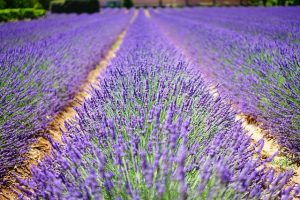
The champion of champions in the aromatherapists kit bag. This wonder plant is very well known for its sleep inducing qualities. It also has the ability to reduce anxiety and emotional stress and is a strong antioxidant making it excellent for pain reduction and skin replenishment. Add a few drops of lavender essential oil to a lavender filled pillow or bag and hang it near the head of the bed. The relaxing, floral aroma will help you drift off.
You can also add a few drops of lavender essential oil to water and using a mist spray bottle, mist your bedding so that the aroma is an encompassing experience.
Lemon (Citrus Limonum)
A long-time favourite of mine, this zesty essential oil is great for enlivening you when the afternoons and dark evenings are dragging and for enhancing concentration. Although lemon is a stimulating oil, it is also calming and works well as a pairing for lavender or on its own. As an extra benefit, lemon is great for calming the digestive system.
Add a few drops to a burner mixed with water to freshen the air after a long day at work (this is when mixing lemon with lavender would be a winning combination) or for use during the day, add a drop or two to a tissue and inhale the refreshing aroma while at your desk or in the car. If you don’t like the fragrance of lemon, you can try grapefruit essential oil instead.
Jasmine (Jasminum Officinale)
Jasmine has a distinctive sweet and flowery fragrance which can be quite heady for some. It does however, have great properties for relieving the blues that often come when the darker months are dragging on. When vaporised (by placing in a burner with some water) Jasmine stimulates the autonomic nervous system and enlivens and awakens the mind and body. It is also excellent as a room fragrance and can be mixed with water for use in a mist spray bottle.
Rose (Rosa Damascena) 
Known for its strong but pleasing floral fragrance, rose essential oil is excellent for calming anxiety or stress and is a friend to those who struggle to regulate sleeping in the darker months. Inhaling rose essential oil through vaporisation (by placing in a burner along with some water) will relax the mind and body. Not a scent to be used when looking for alertness, the properties of this oil are all about relaxation. It has a beneficial uplifting effect on the mood, but really helps sooth the body into a good night’s sleep.
Sandalwood (Santalum Album)
Sandalwood has been used for many hundreds of years for its antidepressant and anti-anxiety qualities. It is also recognised for its properties of focusing the mind. By adding a few drops of sandalwood to a tissue and inhaling throughout the day, it can help to improve the mood and attentiveness but also calm and relax the body.
Sandalwood makes an excellent room fragrance when vaporised, but has the same beneficial properties when burnt in the form of cones or incense sticks. The fragrance can be a little overpowering for some, so as an essential oil it should be used sparingly.
Mental Health Awareness with 1st Armitage Scout Group
The importance of raising awareness and recognition of mental health conditions is gaining a lot of support in the press and is high on the agenda for employers and health groups. It was great to hear that the Scout Troop Leaders at Armitage were exploring the theme of mental health with the Scouts over a number of weeks. Different activities were tried by the Scouts to encourage stress reduction and ways of helping to improve mental health.
I was invited along to teach a yoga class for the Scouts including some relaxation and meditation. There were around 30 Scouts ranging from 10 – 16 years old and all very eager to get started with yoga! I gave an introduction telling the Scouts how yoga can help improve mental health through concentration in the present moment, release of endorphins and breath control.
We tried some breathing exercises to lower the heart rate and increase oxygen circulation before going into a class themed with animal postures to keep the Scouts engaged throughout. After some downward dogs, dolphins, camels, tigers and flamingos thrown into the mix, we settled down to a final relaxation of counted breath. Surprisingly, quiet came to the room as everyone concentrated on their relaxation.
The session was a big success with the Scouts and the Troop Leaders who joined in, and gave a valuable taste of an alternative method for improving mental health.
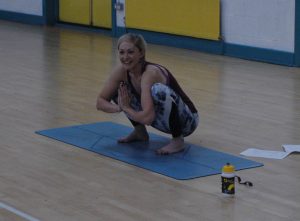
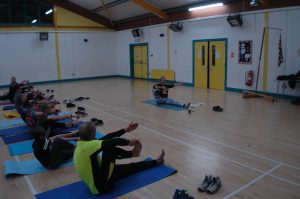
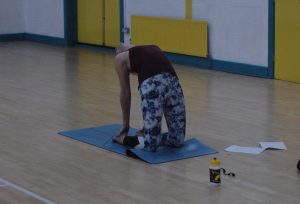
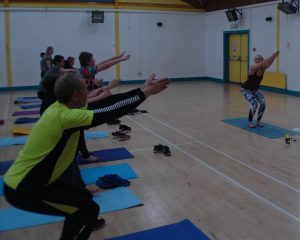
Mindfulness Courses Now Available
Mindfulness is a practice of widening our awareness and insight so that we can live in the present moment without judgment. The ability to watch our minds and the busyness within as an observer rather than through grasping onto thoughts, allows us to experience a greater freedom and peace of mind. The skills of mindfulness can be used in daily life to reduce stress and anxiety, be more productive and develop better relationships at work and at home and lead to a greater sense of physical and mental wellbeing.
The following mindfulness courses are now available in Stafford:
Introduction to Mindfulness—single session course (£25)
Available on the following dates from 6 pm—8 pm:
Tuesday 6th February
Tuesday 13th February
Eight Session Mindfulness Practitioner Course (Introductory offer price £130)
Course starts on Tuesday 27th February and runs weekly with one home practice week at week 5. Each session runs from 6 pm—7.30 pm.
Courses are held in a town centre location with nearby parking. Course materials will be provided.
For more information, visit the Mindfulness tab
Silent Retreat – should you try it?
If you’ve seen Eat Pray Love you know one of the benefits of silent retreat is a fabulously smooth and relaxed throat from giving it a rest. But, do the benefits go deeper?
We’ve all heard the stories of monks and nuns spending years in silence to achieve higher spiritual realisations, but unless you live in the mountains of Tibet, this isn’t really an option in our busy modern lives. One way to try the silent treatment is to go on a short retreat led by an experienced teacher who, periodically, can offer guidance on meditation and how to make silence your friend.
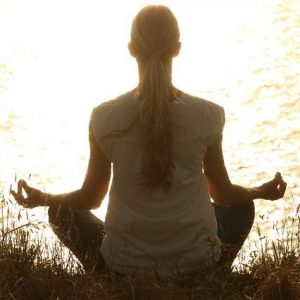
What Silent Retreat Looks Like
When I went on retreat earlier this year, I really had no idea what to expect from the period of silence. It sounds so simple…so simple that I thought it would almost certainly be a waste of time. I was wrong. We started the day on our meditation cushions with some mindfulness of breathing (a simple breathing meditation that usually starts off a period of meditation) and brief guidance from the teacher. We were then instructed that we should try to maintain mindfulness through breathing, sensory experience, body scan and mindful movement for the morning session of approximately 2 hours. There would be a short break, but no talking throughout.
Although I’ve been meditating and practicing mindfulness for over 6 years, this was by far the longest I have spent in meditation. I was daunted, but remembering my mindful practices of non-attachment, I just went for it! I can honestly say that by not having any expectations before the day, it actually helped me to just sit and see what happened. I experienced some mind wandering (obviously) but also achieved the longest period of peace and inner calm than I have ever previously achieved. This was done through listening to the environment – really letting the sounds of ‘now’ into awareness. I don’t mind admitting that I have struggled to have peace of mind for any great length of time over the years, but the benefits of any peace of mind are liberating to say the least. It was interesting to note on silent retreat that even when we were permitted to speak, nobody took up the offer. I also confess that there was a border collie in residence at the retreat and I may have forgotten myself and said hello to him…but I think he kept my secret.
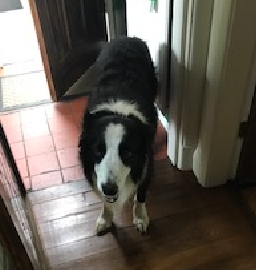
The afternoon continued for another lengthy period of silence; around another 2 hours. Luckily the weather was good enough for mindful walking outside. It was interesting to note that people definitely preferred to stay in their own company drifting off to various corners of the retreat centre and garden, making no eye contact; as though when one kind of social interaction was off limits, all kinds were off limits. It was increasingly difficult to find lengthy periods of peace of mind throughout the day, but when concentrating for such long periods, attention does wander. I tried not to give myself a hard time over this. All participants reported different experiences: some really enjoyed it, others struggled. Spending time alone and in silence is a massive challenge for some personality types. Another reason why it’s so important to let go of judgment and move towards kindness.
What to ‘expect’ from yourself
Silent retreat isn’t easy. It’s a test for experienced meditators and can easily lead to frustration. It’s important to have a solid meditation practice before attempting silent retreat to get the most out of it. There isn’t much time for instruction, no guided meditation and no questioning so you need a full quota of practices to try out through the day/s.
You will find you become tired. It will definitely test your patience. You will have positive and negative thoughts and of course general busy-ness in the mind. That’s all ok! Try to welcome everything and push nothing away. We can place an expectation on ourselves on silent retreat that there will be some kind of breakthrough in our practice. This expectation is something that should be released as soon as possible. Holding onto expectation fuels attachment which definitely gets in the way of awareness. It should be approached the same way as any mindful meditation; without attachment to thought, without agenda and without the need for an outcome. I’d had this retreat booked for about 6 months in advance (people clearly queue up to not talk to each other) so it helped that I had no plans other than to be at the retreat. I had nothing to do but be there – how often does that happen in modern life!?
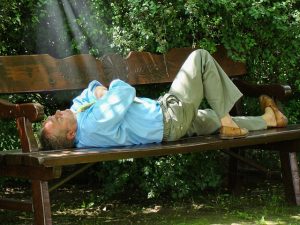
Above all else, remember to be compassionate and kind towards yourself…it’s the key to progress. I think this retreat advanced my practice by giving me a good length of time to practice in isolation. Without the distractions of everyday life and the pressing demands on my time I could really let myself be at ease with meditation. Silent retreat really does feel like a journey (cliché I know) but it’s true! All emotions are experienced. It’s definitely something I’d recommend and it’s certainly something I will be doing again.
The Benefits of Yoga
We’ve all heard that yoga is good for body and mind but isn’t it all just a bit of gentle bending and stretching? What’s all the fuss about…?
The combination of breathing, relaxation, meditation, strength, balance and dynamic movement often found in yoga classes can bring a complete overhaul to our often chaotic lives and busy minds.
Some of the benefits of yoga are more obvious; it builds muscle strength, improves flexibility and stamina, it improves posture, strengthens bones and protects cartilage, it increases heart rate and blood flow and helps drain the lymphatic system. These benefits come from the physical practice, Asana.
It can also help focus and concentration by being mindful of the body and the present moment. The deep and complete relaxation that can come from a yoga practice can fully relax the nervous system. We often spend most of our time in ‘fight or flight’ mode where the sympathetic nervous system is stimulated. This can trigger long-term stress responses and ill health. Yoga is calming and restorative and stimulates the parasympathetic nervous system, lowering breathing and heart rate and bringing the body back to balance.
Yoga is also very useful in providing relief from chronic conditions. A regular practice utilising the full range of body movement improves mobility, flexibility and self esteem. It also improves mood and motivation; you will be more inclined to be active as progress physically, brings progress mentally.
Join a class with The WellNest to see how yoga can improve your body and mind.

